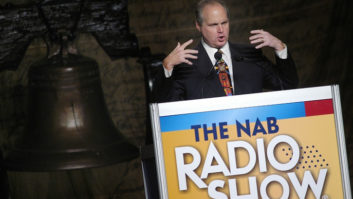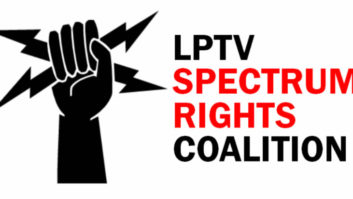The author is membership program director of the National Federation of Community Broadcasters. NFCB commentaries are featured regularly at www.radioworld.com.
The Center for Community Media at the Craig Newmark School of Journalism at the City University of New York recently issued an extensive study on the role of Spanish-language media. Even if your organization is not serving the monolingual-Spanish or Spanish-dominant listener, what researchers noted may give your radio station clues as to potential service opportunities.
The new report is available here. It’s in Spanish, but if you’re limited to English as your own language, never fear. Tools such as Google Translate will help you navigate any barriers you encounter — at least as far as any machine translation can at this stage.
Community Broadcaster: Correct the Record
Journalists who led the investigation into how Spanish-language media is reporting the news tracked thousands of stories since 2016, following Donald Trump’s election. What were the biggest trends they observed? What was left out? Did politics enter the fray? Their findings may surprise you.
What was most striking was that conventional wisdom might tell you Spanish-language media would become either more dogged in their approach around, or would simply more closely follow, the matters polls suggest are on everyone’s minds, including immigration, policing and Congress. You might think the early-term press room clash between Pres. Trump and prominent Univision journalist Jorge Ramos was a precursor to regular reporting on how new policies are impacting various communities. One might also reasonably assume the detention center issue that engulfed media for a time would inform a lot of journalism.
Your guesses would be incorrect, though.
The Center for Community Media researchers found news as a whole declined significantly over the last four years. That is, journalism focused on national issues, the White House and more disappeared. Instead, Spanish-language outlets — like more English-language media, frankly — pivoted to covering celebrities and social media.

There are many complicated reasons for this editorial decision. For English-language radio stations hoping to appeal to new audiences, however, these results point to potential directions.
One path suggests your station could follow what’s happening now and inject popular themes into your programming. You might also consider how your organization can fill gaps in an audience’s media diet.
Clearly, though, English-language media finding Spanish-language audiences is far more involved than “build it and they will come.” There is trust to be fostered. Community outreach, meeting with leaders, and hiring and volunteer opportunities that reflect the community you wish to attract are all part of the formula. Your radio station would also have to plan, in concert with area stakeholders, what issues are more relevant. Audience surveys of how they consume media and what’s interesting may also be illuminating.
While those passionate about the role of journalism may find the new report alarming, community media advocates might see this as a chance to expand, to serve our communities, and to fulfill our purpose of education for all the people.












